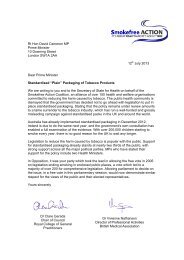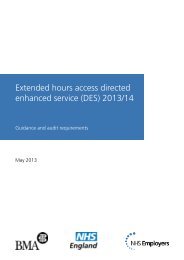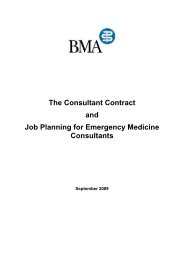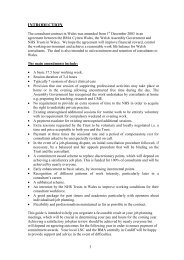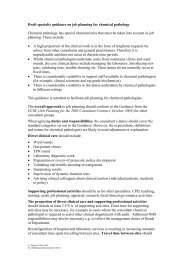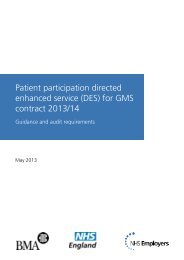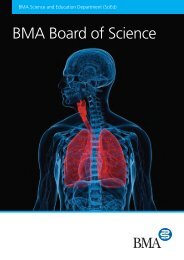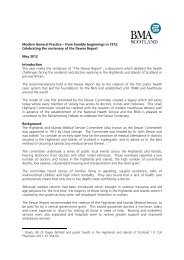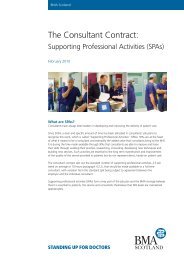Violence Report 2006 final.pdf - BMA
Violence Report 2006 final.pdf - BMA
Violence Report 2006 final.pdf - BMA
You also want an ePaper? Increase the reach of your titles
YUMPU automatically turns print PDFs into web optimized ePapers that Google loves.
Health Policy & Economic Research Unit<br />
Table 10 shows that for the majority of respondents, the violent incident took place in the hospital<br />
ward (27%) or doctor’s office (23%). Among GPs, the majority of incidents took place either in their<br />
office or waiting room, whilst for hospital doctors, the most frequently cited location was the hospital<br />
ward or A&E. Other reported locations included out-of-hours clinics, community health centres or<br />
outpatient clinics. Several respondents also reported verbal abuse over the telephone. In two-thirds of<br />
cases (68%), respondents reported the incident taking place during working hours. However, a fifth<br />
(21%) of doctors reported the violent incident taking place during out-of-hours (table 11).<br />
Table 10 Location where violent incident took place by type of doctor (%)<br />
Hospital-A&E<br />
Hospital-ward<br />
Hospital-public area<br />
Your office<br />
GP waiting room<br />
Patient’s home<br />
Other<br />
Total<br />
Table 11 Timing of violent incident by type of doctor (%)<br />
During working hours<br />
Out-of-hours<br />
Both<br />
Total<br />
General Practitioner Hospital doctor Total respondents<br />
3.7<br />
2.3<br />
0.0<br />
41.6<br />
26.0<br />
12.3<br />
14.2<br />
100.0<br />
28.0<br />
45.5<br />
6.1<br />
7.9<br />
0.7<br />
0.4<br />
11.5<br />
100.0<br />
17.3<br />
26.5<br />
3.4<br />
22.7<br />
11.8<br />
5.6<br />
12.7<br />
100.0<br />
General Practitioner Hospital doctor Total respondents<br />
76.8<br />
11.6<br />
11.6<br />
100.0<br />
60.2<br />
28.9<br />
10.9<br />
100.0<br />
67.5<br />
21.3<br />
11.2<br />
100.0<br />
It is often suggested that racial or political motivations lie behind violent incidents. However, only 1<br />
respondent stated that the incident of violence against them was politically motivated. Instead key<br />
motivations included drugs, alcohol, mental illness and confusion. Respondents were asked why they<br />
thought the violent incident against them had occurred. Table 12 shows that the most frequently<br />
stated reason is that the perpetrator was dissatisfied with the service provided, followed by intoxication<br />
with alcohol/drugs, health related/personal problems or a history of violence/abuse. Dissatisfaction with<br />
the service provided includes patients’ high expectations of the NHS and frustration with long waiting<br />
times, refusal to prescribe or admit for treatment and dissatisfaction with diagnosis received.<br />
<strong>Violence</strong> in the workplace – The experience of doctors in Northern Ireland 11




